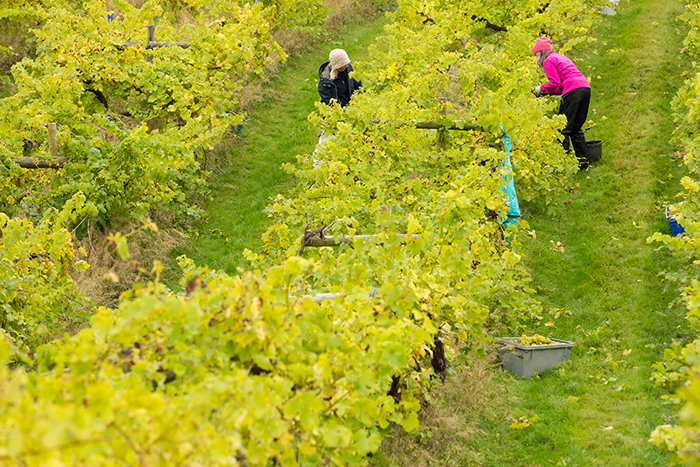Celebrating 50 years, the Carr Taylors were early pioneers planting their vineyard in 1971 and producing some of the first traditional method sparkling wines. Vineyard takes a journey through our industry’s history with David, Linda and Alex Carr Taylor, founders of one of the oldest commercial vineyards in the country, who are now using their wisdom and experience to gear up for an exciting future.
Early pioneers
When David and Linda Carr Taylor established the vineyard back in 1971, the concept of English viticulture was very young. An engineer by background, David bought Yew Tree Farm which surrounded his family home, in 1968. “After two years of growing hay and corn at a loss and seeing what other crops were profitable, growing grapes came to the top of the list. The reason was that once the wine was in the bottle, I could decide which market was the most profitable,” explained David. “I viewed the vineyard as an engineering project, and I must confess I wasn’t particularly interested in wine at first. However, wine is now my life. I’m 82 and still work eight hours a day, seven days a week – but I am no longer on picking duty,” he added.
In 1971 David planted 21 acres and joined the English Vineyards Association. “I believe our vineyard was one of the largest at the time. I had great help from Jack Ward of Merrydown Cider. The English Vineyards Association met regularly to promote the emerging commercial market and we became great friends. Sadly, many of those dear friends are no longer with us.
“We were the age of pioneers, and I have seen everyone, including myself, make so many mistakes. In my view you need to make nine mistakes to achieve the tenth success. Business is always about the bottom line and cash, so necessity spurs invention,” said David.
The Carr Taylors released their first sparkling wine in 1985, from the very large harvest of 1983, a Brut from Kerner and Huxelrebe and a medium dry wine from Gutenborner and Reichensteiner. “The wines were aromatic, rich in fruit and gentle on the palate, so unlike the style of most Champagnes at the time.
“In the early days we encouraged publicity in order to promote our wines – for example in 1989 we exhibited at the Bordeaux Wine Exhibition. We entered our traditional method sparkling wine – and from over 2000 world-wide entrants were awarded a Gold Medal. Then in 1999 we were again awarded another Gold Medal. To date we have over 200 national and international awards.
“In the early days our wines sold better in France than here, as the Brits considered that everything foreign was fantastic and that everything British was rubbish. In fact, it sold in France so well that we had a visit from a couple of Ministry of Agriculture representatives, in their pin-striped suits who asked us to stop selling wine in France. Apparently, they had received complaints from the French government, via the OIV, threatening to stop the imports of English lamb into France. It was nearly a trade war!” David smiled.
David and Linda’s son Alexander joined the business as winemaker and manager in 1994, after a degree in Agriculture from Reading University. The family ethos is an important part of the business and brand which has been carefully built up and nurtured over the last 50 years. The business is well served by a long standing and dedicated team of vineyard and winery staff, cellar door staff and vineyard tour guides. Celebrations for their 50 years will have to wait – but an Autumn barbeque is planned for all the staff members when harvest is over.
“There was an inevitability that I would join the business eventually,” commented Alex Carr Taylor. “I gained winemaking experience from around the world including Villa Maria in New Zealand and Rex Hill in Oregon – which was an eye opener to the potential of Pinot Noir. There are many more opportunities with wine compared to standard agriculture – it’s not just a crop as there are so many disciplines involved in its production,” he added.
Reflections and predictions
“The changes over the years are formidable,” explained David. “In the early days, the wine industry was luck, hard work and the ability to sell wines. During my 50 years in the English wine industry, I can reflect on many landmark activities, some of which are very personal.
“Only in the last 25 years with the understanding that England has a warming climate have the larger growers moved in to dominate the market, their volumes are sold into the multiples as well as popularising direct sales through wine tourism and online activity. The current English industry is maturing with huge investments, from personal wealth to institutional investment. A very long way from my early days and I sit back with a smile to thank all members of the early English Vineyards Association.
“One striking change I have noticed is that when I planted English wine was considered a national joke – and now wine production in the UK is world beating.
“I now honestly think that our wine industry will grow 100 times larger. We currently have around 800 vineyards, I expect that will grow to 8,000 vineyards – and then eventually to 80,000 vineyards. There is the area of land available. I also think that consumption is likely to increase – and I suspect the low alcohol movement is just a phase.”
In the next 50 years, David predicts that our range of wines will become more varied and driven by the customer’s need to match wines with our increasingly diverse and complex cuisine. “Wines will be needed to complement our dishes. We are thinking about the wines that will be produced in the future and planning our replanting in anticipation, including several PIWI varieties.
“One thing that hasn’t changed – is the search for a name for English Sparkling Wine – this was a constant topic of conversation in the early days, often fuelled by wine personality and critic Jilly Goolden – but it has never been found,” exclaimed David.
“I think the establishment of Nyetimber was a major boost to the industry – as well as showing the potential of Pinot Noir and Chardonnay,” explained Alex. “When we started the typical French varieties were off the menu – considered unripenable. With climate change the majority of picking dates are now towards mid-September, rather than October, with lowered acids and improved ripeness, but it has also opened the doors for more varieties to be tried. And 2018 also showed the yield potential for the country, exceptional as it was, and I’m sure we will have more years like it.
“Although a bit of a chicken and egg scenario the significant service industry that has grown up around the business of growing grapes and making wines has had a big impact on the development of the sector. It’s now much easier to plant a vineyard, to find the right equipment, winemaking additives, consultative advice etc. When we started none of this existed and we had to learn and find out everything ourselves. Companies now supply us with information rather than us having to go and research it,” said Alex.
The vineyards
Carr Taylor Vineyards is situated five miles inland from the coast near Hastings. “We benefit from some of the warmest and driest weather in the country. One mile to the south is the Hastings ridge which shelters us from the prevailing south-westerly winds. Some recent analysis shows that this vineyard is one of the prime locations for vines in the south east of England – in the top 1.1% of the best UK winegrowing areas. Our average growing degree days are 750 – 900, (the Champagne region averages just above 1000), perfect for our light, crisp styles of wine.
The main vineyard is at approximately 40 metres above sea level, with a general south east aspect. The soils are typical Wealden soils being mainly a sandy loam overlying ironstone and clay shale. As such they have mostly good drainage and a loose structure to facilitate root growth.
The home site vineyard area is about 21 acres (8.5ha). “We still have 6.3 ha of vines that were originally established between 1971 and 1974. The earlier ripening Germanic varieties included Reichensteiner, Schönburger, Huxelrebe, Kerner, Muller Thurgau and the little planted Gutenborner – all on Geneva Double Curtain (GDC). However, now the Schönburger has been replaced with Bacchus and the Muller Thurgau with Pinot Noir and Pinot Blanc – planted in 2010 on Double Guyot,” explained David.
“Adjacent to this another vineyard area with 14 acres (5.66 ha) is planted. These vines were planted in 1990 again of predominantly German varietals with about a hectare of Champagne varieties. So, we currently have 37 acres of established vines planted. Our on-going plans are for a full site replanting with not only Champagne varietals but also some interesting still wine varieties and some trials of PIWI vines.
“Without a doubt the most reliable variety over the years has been Reichensteiner – in terms of cropping but also in consistency of quality. It is also relatively easy to grow as the loose bunches allow a low fungicide input, the vines are usually free of disease and show good must weights most years. I call it our insurance variety despite its rather unattractive name. More recently Bacchus is showing relatively consistent cropping, but it can take a bit of work to keep clean, you need to be vigilant,” Alex added.
“David planted originally on GDC for a couple of reasons. It was thought that allowing large plants to establish over a broad trellis system was seen as a way to absorb the vigour of our fertile soils, and with cordons positioned high off the ground young buds would be out of the ground frost zone – but mostly there were economic advantages.
“The vine densities were relatively low, 500-700 vines per acre, with row widths over 3.5 meters, so standard agricultural machinery could be used. Also, the labour costs especially for pruning were low, as spur pruning higher growing vines is a relatively quick operation.
“However, the main disadvantages of GDC are denser canopies – limiting light interception and airflow. The vine also has to carry quite a lot of permanent wood allowing for more water shoots and overwintering of disease spores as well as placing a strain on the vascular system when grapes have to ripen sometime 3 or 4 meters from the roots.
“Consensus, and experience, seems to show that high vine density planting contributes to higher yields and the guyot system allows for better ripening and easier (although perhaps more labour intensive) canopy management. I can see advantages for a high wire single curtain for the right varieties in the right place, but the majority of our new plantings will be either single or double guyot,” explained Alex.
“This year is one of the toughest years that I can remember. The damp conditions were perfect for downy mildew – which was hitting the berries so quickly. Fortunately, we managed to limit the losses to about 5% overall. Harvest is about 2-3 weeks late – a bit like old times. However, overall the quality is looking good – thanks to some lovely September warmth and sun and mostly we are achieving around 75 oOe, with acids around 9g/l,” he added.
Carr Taylor wines
“In the early days, for our main Brut sparkling we used Reichensteiner blended with other more floral varieties,” explained David. “We were searching for a style that wasn’t French, something that could be identified as perhaps more ‘English’, but over time the percentage of the other varieties has dropped as the overtly floral aspect didn’t work so well, so that now it is mainly Reichensteiner based, blended with a little Seyval or Chardonnay – this seems to give a more restrained character with a hint of fruit and good acid. We also produce a Rosé from predominantly Pinot Noir and more recently a white blend based on Pinot Noir and Pinot Blanc in a much drier style – less than 5g/l,” added David.
“Without parroting too many wine articles,” said Alex, “my general winemaking philosophy is one of low intervention; some enzymes for clarification and settling, then protein and bentonite finings – mostly on musts and fermenting wines. Once ferment is finished very little is done to the wines with any movement or filtration kept to a minimum. My principal aim is to protect against oxygen and to retain aromas.
“The cliché again is that wine is made in the vineyard and it is important to remember that our cool climate makes delicate wines compared to warmer climes, and as such anything unnecessarily done to the wines will unduly affect the somewhat fragile nature of the wines. Characters like, blossoms, petals, white apple, floral are easily lost.
We are lucky with the acids and can make young, fresh crisp wines and we should see our light crisp lower alcohol wines as a great point of difference which reflect a wonderful sense of place. My most useful tool is my pH meter – amongst other things like tasting, and indeed experience – for deciding picking dates, press cuts, sulphur additions and final wine styles.
“Lastly, I’m always bearing in mind the whims of the consumer, particularly at blending, and with suss reserve and dosage additions. For me, and a lot of wine critics, the drier the wine the better – but the consumer generally prefers a hint of sweetness or, particularly for stills, a more fruit forward style,” said Alex.
“We are proud of our consistency of quality – we have customers who have been drinking our wines for decades, which really speaks for itself. We do have over 200 awards to date – all of which are cause for celebration, but the highlights are obviously the gold medals won in France in 1989 and 1999,” exclaimed Alex.
Routes to market
Our current average production is circa 35,000 bottles – with a split of production at around 60% still wines and 40% sparkling wine. We are aiming to focus more on sparkling wine production in the future, and to increase to around 60% of production,” explained Alex.
“Our main outlet points have been direct sales via our cellar door and to local restaurants. Like many, once the pandemic struck in March last year, we were forced to halt all wine tourism activity, and the local hospitality businesses we supplied had to close – so online sales became vital and we saw a 300% increase on the previous 12 months. We have also done some good business through online retailers dedicated to English and Welsh wines. When the hospitality industry reopened fully this summer, we saw an increase in businesses trying to source more interesting, locally made produce, including wine, which was great,” Alex added.
Tourism, and encouraging visitors to the vineyard is an extremely important part of the Carr Taylor business model. “After all, selling wine directly from our cellar door is where the profit is – along with partnering with third party experience providers, who give us a lot of exposure through large marketing campaigns,” commented Alex. “This year the tourist season was very successful in terms of wine sales, with ‘staycations’ and it seemed as though people had more of a budget for luxury items,” he added.
“Exports are another area of the business we are developing. We have had success exporting to numerous countries over the years, and currently we service the British Embassies to Rome, Vatican City and Asmara,” said David.
Top tips
After 50 years of running a wine production business Alex and David say, “that the most important thing is to know your customer and not to listen to the critics – wine or otherwise. Alex added that, “it’s also vital to understand your business fundamentals and financials, don’t compare yourself to others and prioritise your spending on the things that will make a difference to your bottom line – such as quality, yields, customers and brand. Learn to manage the things you can control and don’t fret over the things you can’t control and there are many; mostly the weather – and I think I’ve seen it all – I’ve learnt that my nine weather apps can all say different things. Also, enthuse your staff; loving wine can be infectious. Know your brand story,” added Alex.
A view on the industry’s future
“I think it’s clear that the English wine industry is charging off into a principally sparkling future,” commented Alex, “which is no bad thing as clear identity really helps, particularly new consumers, understand a region.
“However, this generic identity should be a window to the breadth and depth of the industry, the variation in size of operators, the different styles and the different wines. Although sparkling will dominate our future, I hope that not too many will try to be Champagne look-a-likes – although critics love them – as this will create a bland and homogenised industry and consumers may just choose on price. I think brand identity will inevitably become more important for differentiation; everyone needs their own story. And there is a huge opportunity to make the UK a major wine tourism destination.
“I also believe there is room for some exceptional still wines in this country especially with different or new varieties, although price point can become an issue with these. The Pinots, oak, sweet wines etc, all add complex nuances underneath the generic identity. This is something I believe WineGB can really boost with the right promotion.
“There is still room for a lot of expansion in the industry, benefitting all. To an extent we are in a state of flux with the rapid expansion going on – it is uncharted territory. We don’t yet know the extent of the consumer appetite for UK wines, how the market will react, what price points they will accept.
“A challenge for the industry here is really to grasp how to market a brand. As important as the technicalities of vinegrowing and winemaking are, we have to shift stock at a profitable price. I think that successful business for the future will have passion, professionalism and an international outlook.
“Amongst our challenges are variable yields, fungicide reduction, affordable mechanisation and exports. Cracking these nuts, and particularly balancing labour costs with yields, will allow a young vibrant industry to begin to mature successfully.
“Sustainability though isn’t a nut to crack; it’s a long, slow journey with no real end point and neither should it have one. It’s more a mindset and the consumer should expect nothing less from the industry. At Carr Taylor vineyards, we have always been on that journey, we don’t over-manage the vineyard due to the negative effect that has on soils, their biomes, organic matter and the health of the growing environment. We avoid insecticides, and spray only when and where needed – and we are sure to calibrate the sprayer properly. We also think a few weeds are okay. Energy and waste management are now major areas we are considering as we look at upgrading and expansion.
Future plans for Carr Taylor
After 50 years, the family have redevelopment plans underway for the vineyard, as well as designs for a new winery and equipment upgrade.
“In the vineyard we are looking at different clones, those with looser bunches, with the aim to reduce inputs. I think the Pinots have a big place in this country and are very marketable – and I have a particularly soft spot for Gusbourne’s Pinot Noir. We will also be planting PIWIs, as they also have very marketable names – certainly better than Reichensteiner. But most importantly is their fungal resistance and yields – and the fact that they already have a track record of producing good wine.
“Although increasing our proportion of sparkling, and building on reserve wines, this will not be our only focus, as in the UK we are exposed to such variation in yields that it is hard for business and cash flow – so a range of products is needed to help balance this.
“I am keen on new technologies, I have used ozone in wineries, but I am interested to hear of the potential for using ozone in the vineyard, as well as technologies such as ultra-violet treatment for fungal infections. I think the next 50 years will be very interesting for our industry – and exciting!” Smiled Alex.“
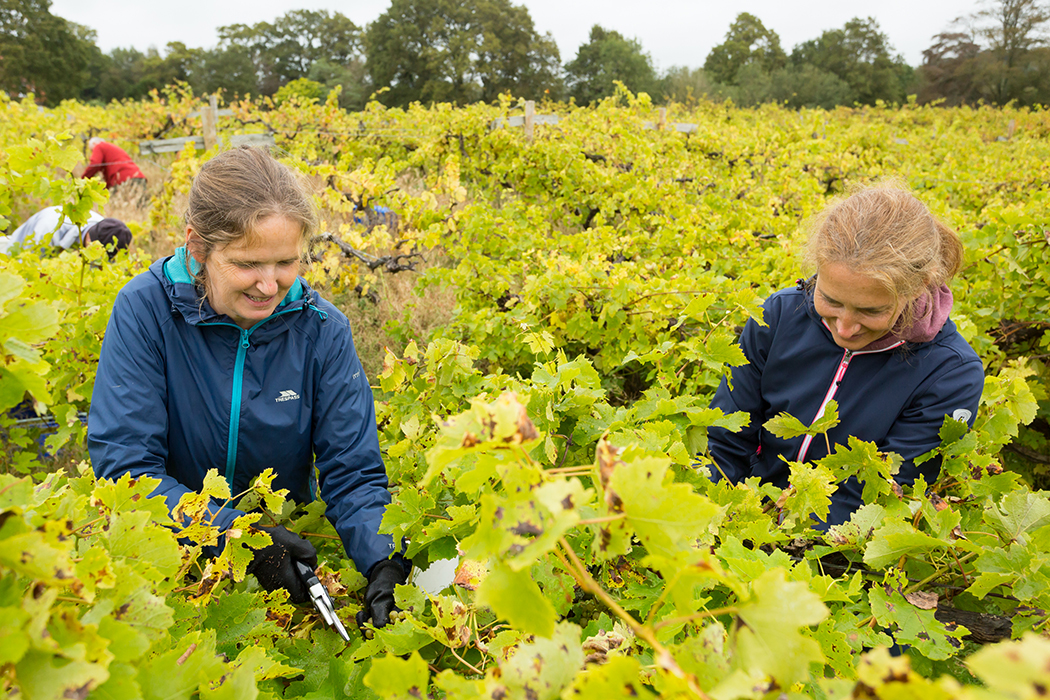
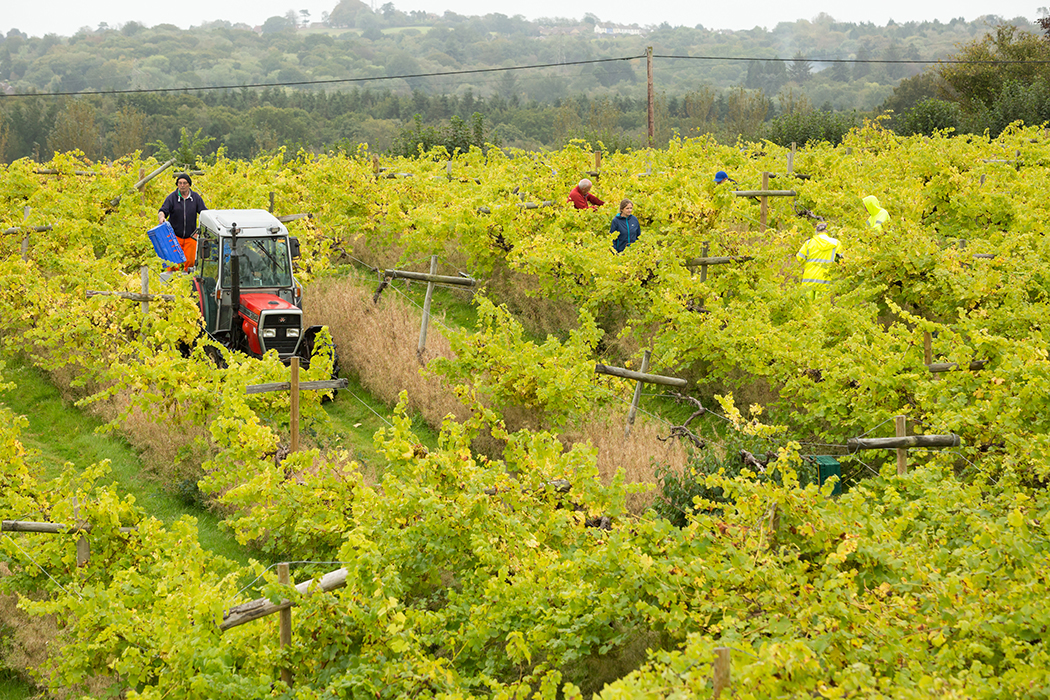
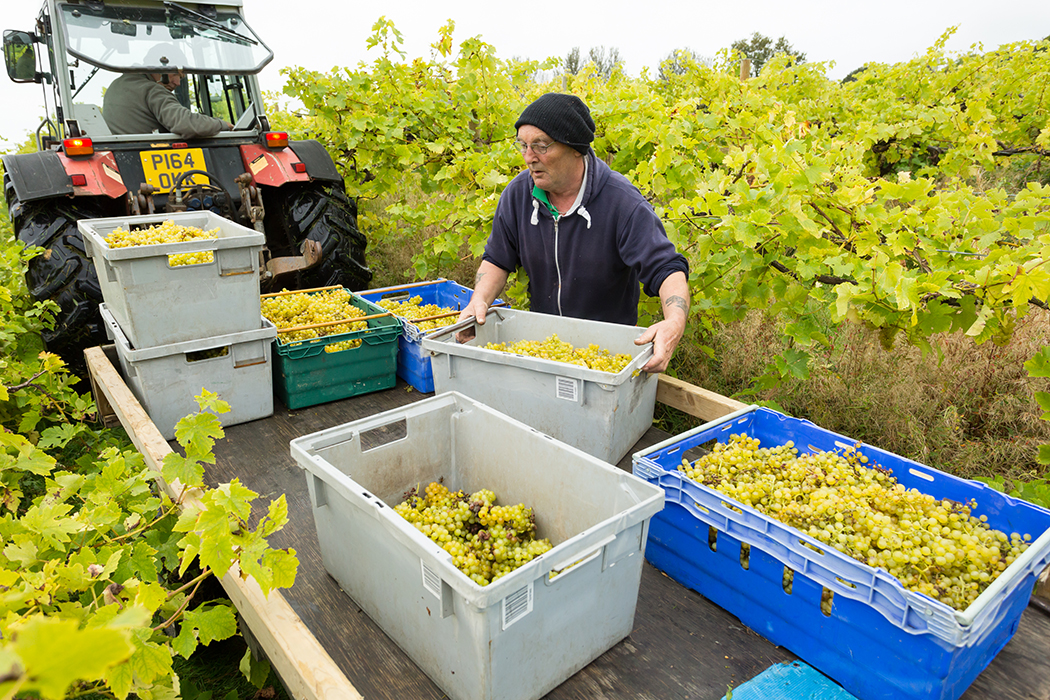
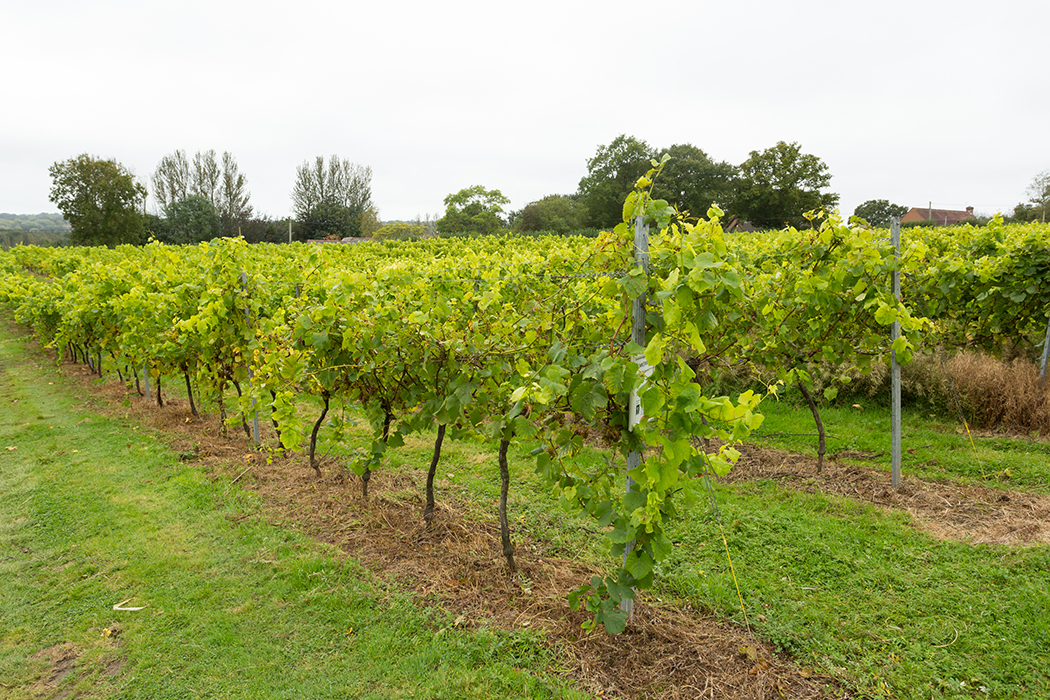
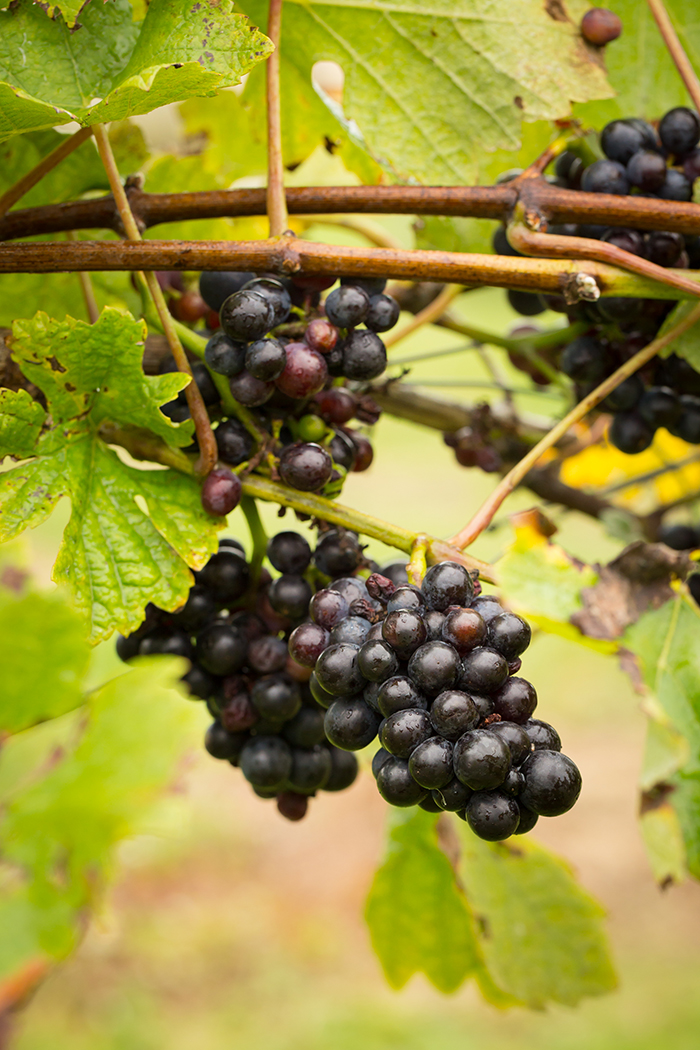
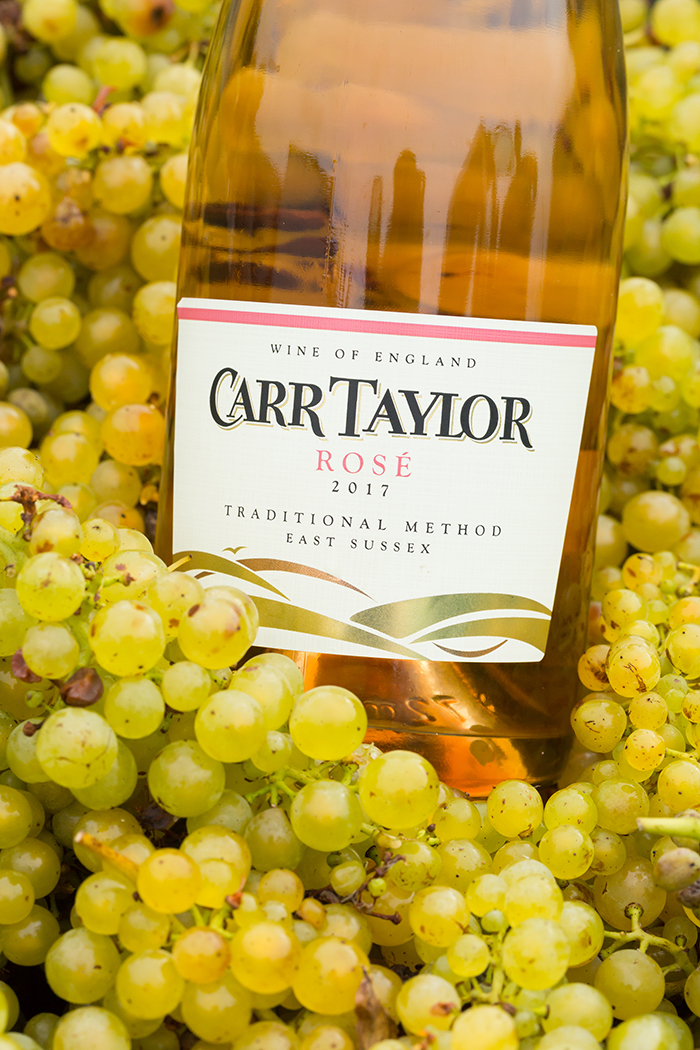
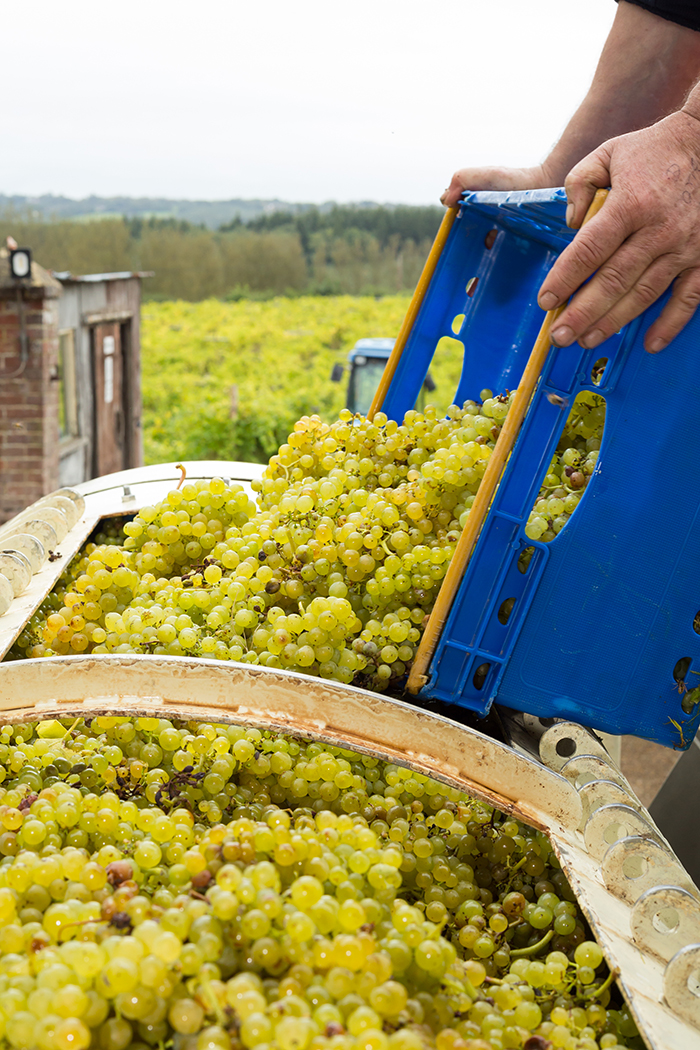
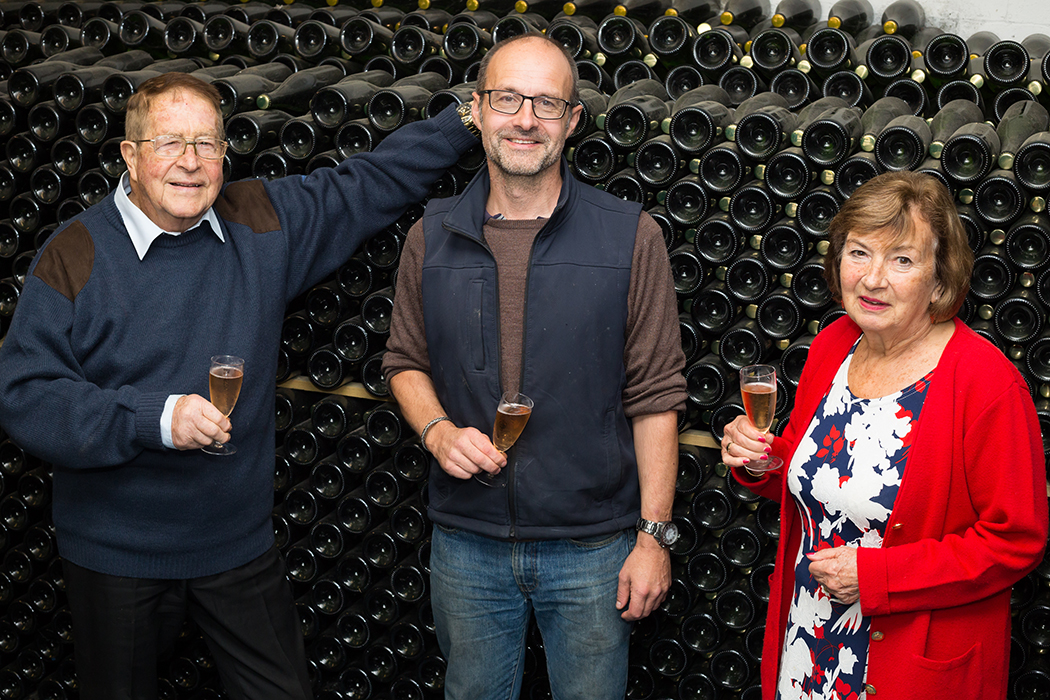
David, Alex and Linda Carr Taylor 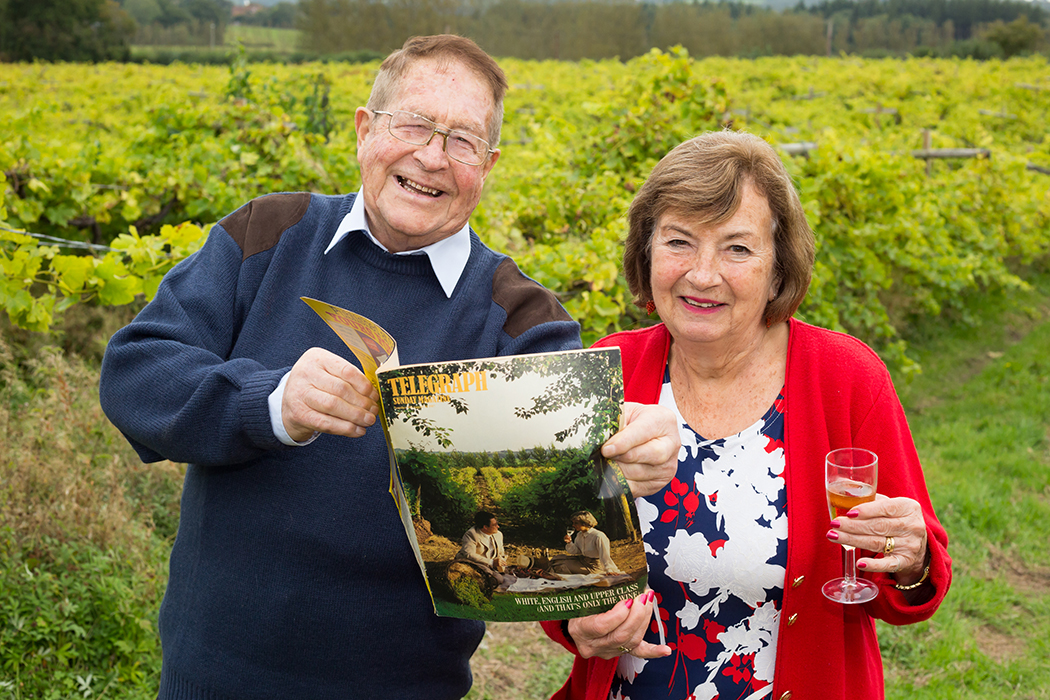
David and Linda featured on the front cover of the Telegraph Magazine in August 1987

